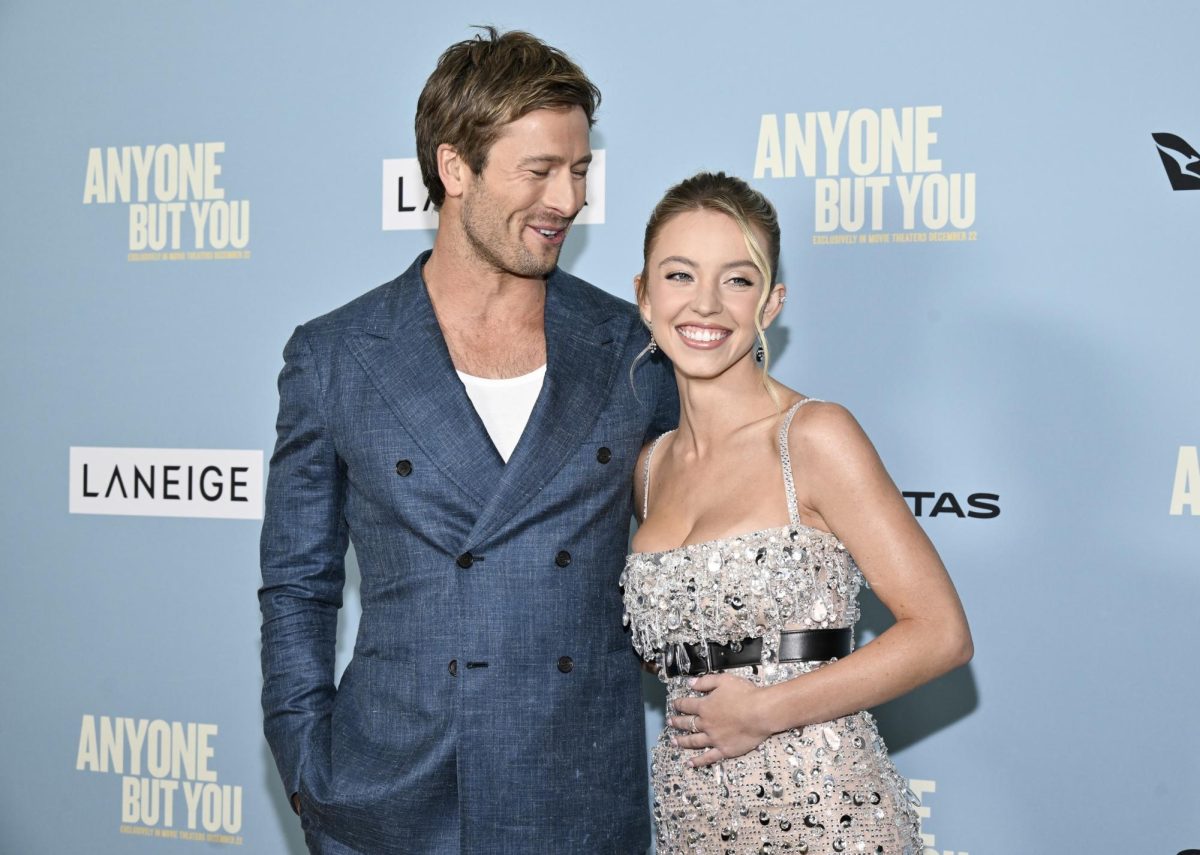We all remember how movies started to suck or were exclusively sequels in the early 2000s. The multiple “Cars” and “Toy Story” movies prove that. We all remember the movies from our childhood and how spectacular they were. “Anyone But You” may not completely be changing the movie scene, but it is definitely bringing back old traditions.
In this movie, Bea (Sydney Sweeney) and Ben (Glen Powell) are a picture-perfect couple, until something happens on their first date that turns their attraction into hate. When they’re unexpectedly pushed together at the destination wedding of Bea’s sister, they pretend to be a couple to benefit their separate romantic endeavors.
With tropes of second chance, enemies to lover and fake dating, this movie is set up for success. But the inspiration behind it is widely unknown.
To the shock of those who watched the advertisements, “Anyone But You” is an adaptation of William Shakespeare’s “Much Ado About Nothing.”
As an avid fan of ’90s rom-coms like “10 Things I Hate About You” and “She’s the Man,” both Shakespeare adaptations, realizing this sold me on seeing the movie.
And I was not disappointed.
I was worried it wouldn’t live up to my favorites, and while it could never top “10 Things I Hate About You,” it did rank higher than any recent rom-com.
There were some weird scenes, like when their friends were trying to get them together and acting in a Shakespearean way, but every wacky thing added some personality – even if I wouldn’t have imagined putting it in there.
It did have some of those classics from ’90s movies that were modernized but incredible.
There was the advertised mention of “Titanic” on the boat, where the two leads did the classic pose, and the wedding prep montage was reminiscent from that of “Mamma Mia.”
In an interview with Vanity Fair, screenwriter Ilana Wolpert mentions the intentionality of the homages and how she wrote it as an ode classic rom-coms like “10 Things I Hate About You” and “She’s the Man,” as well as honoring Nora Ephron, the screenwriter of “Sleepless in Seattle,” “You’ve Got Mail” and “When Harry Met Sally.”
There was an epic scene of forgiveness, as well as classic rotating cinematography when the dynamic changed from enemies to friends.
Their tension was palpable, both as enemies and lovers, and the moment they both felt the switch from hate to love was specific and intentional.
Following their second break-up was a montage with so much attention to detail, my jaw was on the ground. It mirrored opening scenes when they hated each other but switched their physicality and evoked the thought that they were both crushed to lose the other. There were things Bea did the first time they met that Ben did the second time, and that combined with the montage brought the movie full circle.
The acting throughout was incredible. Powell played a convincing male love interest and had an excellent performance. Sweeney’s performance was a little dull but not bad. Seeing her acting skills in “Euphoria” leads me to believe this was a direction she was given. It was not her best work, but it was by no means bad.
Refocusing on the Shakespeare aspect, they kept the main character’s names but used modern nicknames: Beatrice became Bea; Benedick became Ben; Claudio became Claudia; and Hero became Halle.
They did modernize it more than expected by making the friends’ wedding be between two women, but they did so gracefully and tastefully. They included it but didn’t emphasize it in a way that felt forced or belittled the general plot.
They included quotes from “Much Ado About Nothing” on the walls during transitions and in the wedding vows. Additionally, right before the unusual post-credit scene – which was actually pre-credit – “Much Ado About Nothing” was written in Hollywood-sign style font.
I hope this trend reignites and we get more modern Shakespeare adaptations that create rom-coms the next generation can think of as fondly as ours thinks of those from the ’90s.


